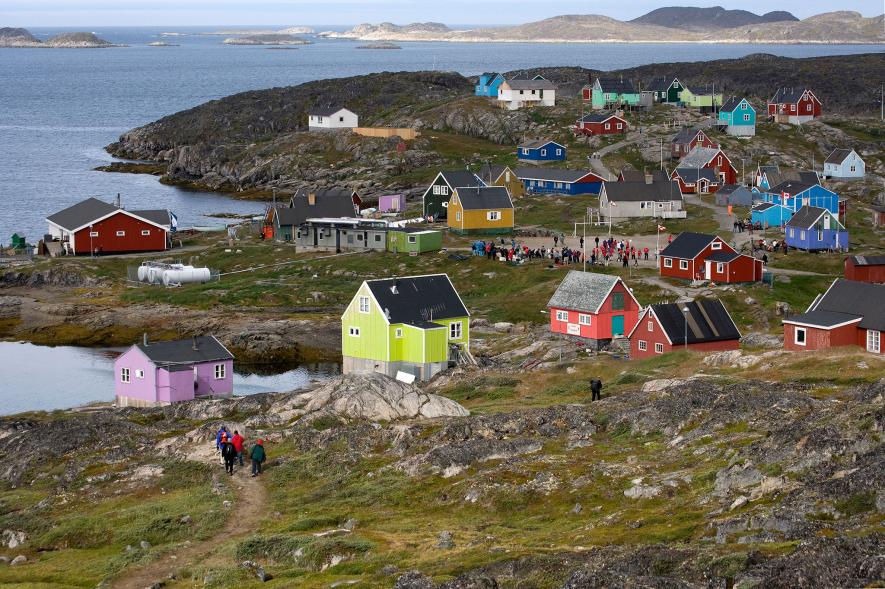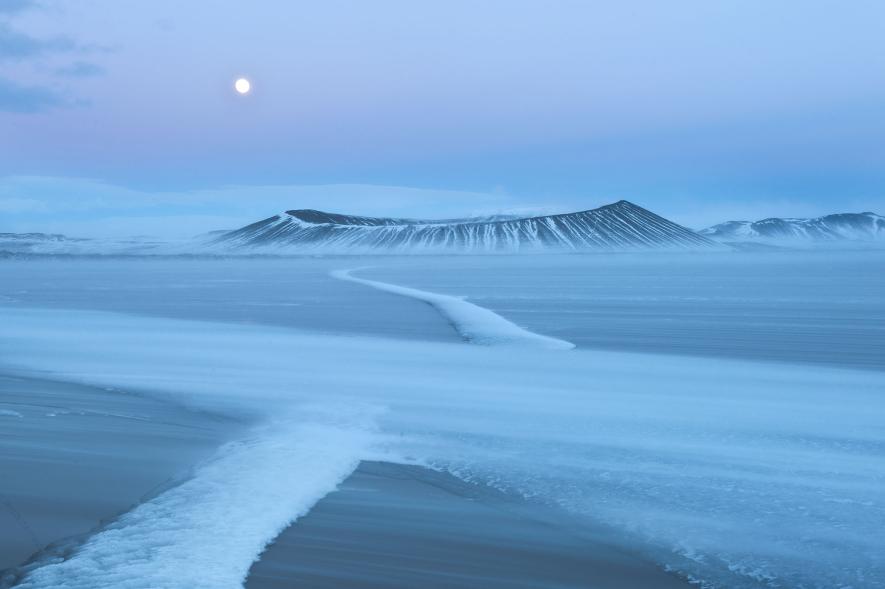
Is Iceland Really Green and Greenland Really Icy?
Source: news.nationalgeographic.com
PHOTOGRAPH BY FRANS LANTING, NATIONAL GEOGRAPHIC CREATIVE (LEFT) AND PHOTOGRAPH BY JONAS BENDIKSEN, NATIONAL GEOGRAPHIC (RIGHT)
Left: This iceberg in Scoresby Sound, East Greenland, is one of many frozen sights in the country. Right: Craters at Lake Myvatn in Iceland are among the country’s many green landscapes.
By
A glance at the globe might make you wonder why Iceland seems oddly green, while Greenland is covered in ice. There’s even an Internet meme about it.
Schoolyard wisdom says this was intentional—Iceland’s Viking settlers thought the name would discourage oversettlement of their verdant island, while nobody cared if people tried to settle the ice-covered Greenland. But the truth is more complicated, and it has to do with both Norse custom and our shifting global climate.
The Facts
Over 80 percent of Greenland is covered in ice, but its grass was probably greener back in the summer of A.D. 982, when Erik the Red first landed in the southwest of the island. Sheep and potato farms still flourish in that same southwestern corner of Greenland, which sits at a more southerly latitude than neighboring Iceland.
Meanwhile, thanks to the Gulf Stream, Iceland’s sea surface temperatures can be about 10ºF (6ºC) warmer than Greenland. The milder climate means summers are intensely green throughout Iceland, even though 11 percent of that country is still covered with permanent ice cap. Vatnajökull is Europe’s largest glacier—a piece of ice the size of Puerto Rico.


So How Did the Names Get Switched?
The current names come from the Vikings. Norse custom was to name a thing as they saw it. For instance, when he saw wild grapes (blackberries, probably) growing on the shore, Erik the Red’s son, Leif Eríksson, named a portion of Canada “Vinland.”
Ice core and mollusk shell data suggests that from A.D. 800 to 1300, southern Greenland was much warmer than it is today. This means that when the Vikings first arrived, the Greenland name would make sense. But by the 14th century, maximum summer temperatures in Greenland had dropped. Lower temperatures meant fewer crops and more sea ice, forcing the local Norse population to abandon their colonies.
The Icelandic sagas fill in the other half of the switched-name story.
The legends say Naddador was the first Norse explorer to reach Iceland, and he named the country Snæland or “snow land” because it was snowing. Swedish Viking Garðar Svavarosson followed Naddador, and this led to the island being called Garðarshólmur (“Garðar’s Isle”). Alas, Garðar’s Isle was not so kind to its next arrival, a Viking named Flóki Vilgerðarson. Flóki’s daughter drowned en route to Iceland, then all his livestock starved to death as the winter dragged on. Depressed and frustrated, Flóki, the sagas say, climbed a mountain only to see a fjord full of icebergs, which led to the island’s new name.
Like the iceberg that struck the Titanic, the spring ice that Flóki saw most likely drifted over from Greenland, but no matter—Flóki’s name stuck fast in the Viking world. Back in Norway, Flóki disparaged Iceland, but one member of his crew named Thorólf spread rumors that the new island was so rich, butter dripped from every blade of grass. Permanent settlement began soon after.
“The new population on the island “felt they were part of the Nordic region, but they wanted to maintain a separate identity,”
says Guðni Thorlacius Jóhannesson, a professor of history and newly elected president of Iceland. These settlers called themselves Íslendingur, which Guðni says means “a man from Iceland in the court of Norway.”
“An island has to have a name, and that is the one that stuck,” he adds.
A century later, Iceland was a growing democracy and the home of Erik the Red, who was banished from the country after killing three people in a feud. He sailed west in search of a new home—and found it. The sagas (in this case Erik the Red’s Saga of the Icelanders) tell the rest of the story in a single sentence:
“In the summer, Erik left to settle in the country he had found, which he called Greenland, as he said people would be attracted there if it had a favorable name.”
Thus, Iceland was named by a sad Viking and Greenland is the slogan of a medieval marketing scheme.
“It is unfortunate that the name Greenland stuck because that is not the name that the natives know it by,”Guðni says.
Today’s Greenlanders call their country Kalaallit Nunaat, which simply means “Land of the People” in the Greenlandic Inuit language.
Switching Back
Unfortunately, the Land of the People Most Adept at Living With Ice now faces the impending realities of climate change. The rapidly melting Greenland ice sheet has resulted in cold temperatures in the North Atlantic, which has significantly slowed the Gulf Stream. Should the trend continue, Iceland will likely suffer much colder temperatures and even sea ice, while Greenland will continue to grow warmer and shed icebergs at an alarming rate.
In a century or two, it could very well be that the globe will make more sense, and Iceland and Greenland will better resemble the names they were given a thousand years ago.
